Papers by Alejandro Terrazas
L'Anthropologie, Oct 31, 2023
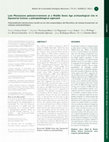
Boletín de la Sociedad Geológica Mexicana
Key evidence of human occupation in Africa during the Middle Palaeolithic (Middle Stone Age [MSA]... more Key evidence of human occupation in Africa during the Middle Palaeolithic (Middle Stone Age [MSA]) is available from the south and east of the continent, where semi-arid climate prevails. Rare evidence of MSA human occupation in the humid tropical region was recently reported from Equatorial Guinea. To identify if paleolithic human occupation occurred in the tropical forest, the stratigraphy of the recently discovered archaeological site “Mabewele I” was analyzed using a paleopedological approach. The properties evaluated along a vertical profile are: granulometry, magnetic susceptibility (K), free iron extractable with sodium dithionite (Fed), total organic carbon (TOC), chemical composition by X-ray fluorescence (XRF), X-ray diffraction mineralogy (XRD), ternary plot of the three main oxides (SiO2-Al2O3-Fe2O3), phytoliths and micromorphology. The predominant fraction is sand, with a significant clay content (> 30 %). The K and the Fed presented low values, as well as the TOC. X...
Revista atlántica-mediterránea de prehistoria y arqueología social, 2002
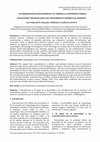
Revista atlántica-mediterránea de prehistoria y arqueología social, 2014
Resumen: Se sostiene que las contradicciones expresadas en los debates y polémicas entre posicion... more Resumen: Se sostiene que las contradicciones expresadas en los debates y polémicas entre posiciones teóricas diversas, constituye el principal factor de desarrollo de las ciencias. Se consideran someramente, a manera de ejemplos, posiciones que comparten conceptos evolucionistas-que reaccionan contra el difusionismo histórico cultural-como el neodarwinismo y el materialismo histórico en algunas de sus variantes principales y cómo se han manejado en los estudios de arqueología y antropología en Patagonia y Tierra del Fuego. Se concluye que es deseable incentivar los debates teórico-metodológicos que permitan superar la condición de una predominante "actitud paleocientífica, sostenida por un tipo primitivo de filosofía empirista, (que) es en gran parte la causa del atraso de las ciencias del hombre" (Bunge, 1969: 416), pero bajo condiciones básicas de ejercicio de la democracia y de ética científica y honestidad profesional.
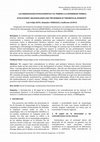
Revista Atlántica-Mediterránea de Prehistoria y ArqueologÃa Social, 2014
Resumen: Se sostiene que las contradicciones expresadas en los debates y polémicas entre posicion... more Resumen: Se sostiene que las contradicciones expresadas en los debates y polémicas entre posiciones teóricas diversas, constituye el principal factor de desarrollo de las ciencias. Se consideran someramente, a manera de ejemplos, posiciones que comparten conceptos evolucionistas-que reaccionan contra el difusionismo histórico cultural-como el neodarwinismo y el materialismo histórico en algunas de sus variantes principales y cómo se han manejado en los estudios de arqueología y antropología en Patagonia y Tierra del Fuego. Se concluye que es deseable incentivar los debates teórico-metodológicos que permitan superar la condición de una predominante "actitud paleocientífica, sostenida por un tipo primitivo de filosofía empirista, (que) es en gran parte la causa del atraso de las ciencias del hombre" (Bunge, 1969: 416), pero bajo condiciones básicas de ejercicio de la democracia y de ética científica y honestidad profesional.

The subsurface of the Mexican state of Quintana Roo, located on the northeastern Yucatán peninsul... more The subsurface of the Mexican state of Quintana Roo, located on the northeastern Yucatán peninsula, hosts one of the largest underwater cave systems in the world. Interconnected caves formed within thick-bedded shallow water carbonate bedrock of Mio-, Plio-and Pleistocene age (Weidie, 1985). The cave system is located only a few kilometers away from the Caribbean coastline and the caves are linked with the ocean via an extensive system of subterraneous conduits. Water level within the caves thus corresponds to sea-level. Since the end of the Last Glacial Maximum (LGM), sea-level rose from about 120 m below present (Grant et al., 2012), gradually flooding the caves. Stalagmites represent an independent archive for the evaluation of sea-level and climate variations in the Yucatán peninsula region. They only grew when the cave floor was dry; they are sensitive to climatic changes and easy to date with the U/Th-excess method. Here we present initial data on 27 stalagmites, 7 of which gr...
Journal of South American Earth Sciences, 2017
Here we describe the left mandibular ramus of a fossil peccary from the submerged karst cave syst... more Here we describe the left mandibular ramus of a fossil peccary from the submerged karst cave system in the southeastern Mexican state of Quintana Roo. The specimen, which was discovered in the Muknal cave northwest of Tulúm, is a new genus and species of peccary termed Muknalia minima. The taxon likely dates from the latest Pleistocene and differs significantly from all extant peccaries and their Pleistocene relatives by a concave notch at the caudal edge of the mandibular ramus and prominent ventrally directed angular process. These diagnostic osteological differences suggest that the masticatory apparatus differed from all other peccaries and may hint to an ecological isolation on the late Pleistocene Yucatán Peninsula.
EL MODELO PANAFRICANO DEL ORIGEN DE HOMO SAPIENS NECESITA “MÁS ÁFRICA”, 2022

ESTUDIOS DE ANTROPOLOGÍA BIOLÓGICA, 2022
The present work is an analysis of the craniofacial morphological variation of four female specim... more The present work is an analysis of the craniofacial morphological variation of four female specimens that are chronologically located in the Late Pleistocene-Early Holocene and Middle Pleistocene transition. They come from different parts of Mexican territory: two from the Mexico Basin, one from the Puebla-Tlaxcala Valley and one from the submerged cave of Las Palmas, Yucatan Peninsula: the Woman of Astahuacán I (10 300 + 600 years BP), the Woman of the Peñon III (10 755 + 55 years BP), the Woman of Texcal (7 233 + 36 years BP) and the Woman of Las Palmas (8 050 + 130 years BP). The morphology of these specimens was compa- red to other cranial samples from more recent chronological periods: Tlatilco and Zacatenco (Preclassic), Caves La Candelaria and La Paila, Coahuila and Baja California Sur (Postclassic). The latter have been considered to have certain cranial morphological characteristics related to those observed in the first populations that entered the New World. It was included, also, as a comparative material, a series of skulls of Mayan population of xix Century, from the city of Campeche. From the examination of eight craniofacial measurements, multivariate techniques such as principal component analysis (pca) and discriminant analysis were applied. The results suggest that there is a remarkable variability within the preceramic group, in contrast to the morphology observed in the skulls of later times in the Mesoamerican area.

As starting activity for the Uoro Rift-Wele River Project, a 20-day exploratory trip to Equatoria... more As starting activity for the Uoro Rift-Wele River Project, a 20-day exploratory trip to Equatorial Guinea was made in May 2014. During this time, the existing agreement between UNAM and the National University of Equatorial Guinea was renewed, aprovisional exploration permit from the National Institute for Forest Development (INDEFOR) was obtained, and an exploration survey was made in the Niefang region at the Uoro Rift. In these few weeks, eight new surface sites with diagnostic archaeological materials from the Middle Stone Age (MSA) were reported, and several large-format tools not previously described in existing publications were identifed, extending the typological variability range of the local MSA, including artifacts from the Sangoan-Lupemban period. The results show that the present institutional and geographic conditions are ideal for a long-term archaeological project in Equatorial Guinea.
Los humanos dejan huella de sus actividades, aunque incompletas y fragmentadas en los restos de s... more Los humanos dejan huella de sus actividades, aunque incompletas y fragmentadas en los restos de su cultura material. La funcion de, por ejemplo, un atlatl , una lanza o una flecha son bien conocidas, y la presencia de alguno de estos elementos en un sitio sugiere su uso en actividades relacionadas. Sin embargo, podemos ir mas alla e inferir actividades que no se relacionan directamente con los objetos en cuestion, pero que son implicadas por su presencia. En este trabajo se presentan los resultados de la interpretacion de los datos obtenidos tanto del contexto arqueologico como del estudio de las huellas de actividad efectuados en el esqueleto del Individuo 3, procedente del sitio El Arrastre en el noreste de Sonora, en el que se encontraron incrustadas dos puntas de flecha en el cuerpo, evidenciando la presencia de violencia interpersonal.

espanolEste trabajo se centra en las representaciones grabadas de caracter astral del Arroyo de l... more espanolEste trabajo se centra en las representaciones grabadas de caracter astral del Arroyo de las Flechas, con una propuesta interpretativa sobre su contexto espacial, tematico y cultural. Este conjunto rupestre se localiza en la Sierra de El Alamo (noroeste de Sonora), un sitio conocido tambien como Aguaje de las Palomas. La primera referencia a este conjunto de petroglifos corresponde a D. Ballereau (1991), quien realizo un primer inventario y clasificacion iconografica. En el ano 2013 hemos reemprendido el estudio de este yacimiento, con la reelaboracion del inventario y el estudio tematico de sus representaciones, en el ambito del proyecto “Ocupaciones Humanas durante el Cuaternario en el Noroeste de Sonora (OHCNS-Instituto de Investigaciones Antropologicas de la Universidad Nacional Autonoma de Mexico)” Su contenido esta constituido por figuras humanas, animales, objetos o instrumentos (flechas y puntas de proyectil), elementos abstractos y astronomicos. El arroyo de las Flec...

Prehistoric evidence from submerged caves and sinkholes (cenotes) on the Yucatan peninsula provid... more Prehistoric evidence from submerged caves and sinkholes (cenotes) on the Yucatan peninsula provides strong evidence for the existence of an early preceramic human settlement in southern Mexico. During our ongoing paleoanthropological research we have already documented three well-preserved human skeletons as old as 13,000 and 9000 years from these sites in Quintana Roo (Gonzalez et al. 2008a, Gonzalez et al. 2008b). The findings were associated with hearths and a diverse megafaunal assemblage of late-Pleistocene age. A fourth human skeleton was discovered in 2009, two more in 2010, and two others in 2011. Here we provide a first register of these additional five skeletons, bringing the total assemblage to eight. A ninth skeleton was informally reported from the same area by INAH researchers. These findings thus constitute one of the largest databases on bones of early humans in Mexico.
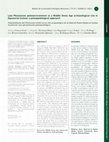
Boletín de la Sociedad Geológica Mexicana, 2022
Key evidence of human occupation in Africa during the Middle Palaeolithic (Middle Stone Age [MSA]... more Key evidence of human occupation in Africa during the Middle Palaeolithic (Middle Stone Age [MSA]) is available from the south and east of the continent, where semi-arid climate prevails. Rare evidence of MSA human occupation in the humid tropical region was recently reported from Equatorial Guinea. To identify if paleolithic human occupation occurred in the tropical forest, the stratigraphy of the recently discovered archaeological site “Mabewele I” was analyzed using a paleopedological approach. The properties evaluated along a vertical profile are: granulometry, magnetic susceptibility (K), free iron extractable with sodium dithionite (Fed), total organic carbon (TOC), chemical composition
by X-ray fluorescence (XRF), X-ray diffraction mineralogy (XRD), ternary plot of the three main oxides (SiO2-Al2O3-Fe2O3), phytoliths and micromorphology. The predominant fraction is sand, with a significant clay content (> 30 %). The K and the Fed presented low values, as well
as the TOC. XRF showed few variations along the sequence and XRD showed that the clays are mainly kaolinites, with a very low component of
vermiculites. The phytoliths correspond to tropical vegetation with few changes in the vegetal composition between the deep and superficial zones. A charcoal from the lower part of the profile was dated between 12.57-12.24 ka cal BP, while the main artifact horizon was located at the bottom. The analytical results appear contradictory: on the one hand, there is evidence of intense chemical weathering under a humid tropical climate, but the clay cutans in the pores are very scarce and incipient and the iron nodules are mostly anorthic. This indicates that the sequence is composed of pedosediments associated with a high environmental dynamism, with short periods of erosion-sedimentation-pedogenesis.
The results allow us to propose that humans inhabited the tropical forest during the MSA and that erosion-sedimentation processes could be related to anthropization processes.
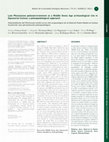
Key evidence of human occupation in Africa during the Middle Palaeolithic (Middle Stone Age [MSA]... more Key evidence of human occupation in Africa during the Middle Palaeolithic (Middle Stone Age [MSA]) is available from the south and east of the continent, where semi-arid climate prevails. Rare evidence of MSA human occupation in the humid tropical region was recently reported from Equatorial Guinea. To identify if paleolithic human occupation occurred in the tropical forest, the stratigraphy of the recently discovered archaeological site "Mabewele I" was analyzed using a paleopedological approach. The properties evaluated along a vertical profile are: granulometry, magnetic susceptibility (K), free iron extractable with sodium dithionite (Fe d), total organic carbon (TOC), chemical composition by X-ray fluorescence (XRF), X-ray diffraction mineralogy (XRD), ternary plot of the three main oxides (SiO 2-Al 2 O 3-Fe 2 O 3), phytoliths and micromorphology. The predominant fraction is sand, with a significant clay content (> 30 %). The K and the Fe d presented low values, as well as the TOC. XRF showed few variations along the sequence and XRD showed that the clays are mainly kaolinites, with a very low component of vermiculites. The phytoliths correspond to tropical vegetation with few changes in the vegetal composition between the deep and superficial zones. A charcoal from the lower part of the profile was dated between 12.57-12.24 ka cal BP, while the main artifact horizon was located at the bottom. The analytical results appear contradictory: on the one hand, there is evidence of intense chemical weathering under a humid tropical climate, but the clay cutans in the pores are very scarce and incipient and the iron nodules are mostly anorthic. This indicates that the sequence is composed of pedosediments associated with a high environmental dynamism, with short periods of erosion-sedimentation-pedogenesis. The results allow us to propose that humans inhabited the tropical forest during the MSA and that erosion-sedimentation processes could be related to anthropization processes.
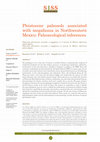
Spanish Journal of Soil Science, 2018
The pedological cover of the state of Sonora, in northern Mexico, is predominantly composed of mo... more The pedological cover of the state of Sonora, in northern Mexico, is predominantly composed of moderately developed red soils that evidence processes of weathering, humification, rubification, neoformation of clay, and carbonation, classified as Cambisols according to the WRB. These soils constitute a pedological unit denominated the San Rafael Paleosol (SRP). In contrast, gray soils are recorded in some sites located in semi-closed basins and are characterized by processes of weathering, neoformation of clay, reductomorphism and carbonation. These soils developed during the late Pleistocene under a semi-arid and cold climate, slightly more humid than the present one, with winter dominant rains, and marked seasonal changes. These paleosols are associated with remnants of Pleistocene Rancholabrean fauna of diverse composition, associated with arid and humid climates, demonstrating local climatic variations much more complex than at present. This paper evaluates the physical, chemical...
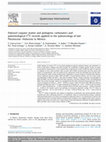
Quaternary International, 2016
Stable isotopes of carbon (d 13 C) in terrestrial geological materials (paleosol humus and carbon... more Stable isotopes of carbon (d 13 C) in terrestrial geological materials (paleosol humus and carbonates) as well as fossil bones (collagen and tooth enamel) are established as highly specific records on paleoenvironmental characteristics. It was assumed that comparing the results of different types of materials on regional or local scales provides more accurate and reliable reconstructions and even opens new aspects of interpretation. This was tested by the comparison of the data obtained from the late Pleistocene paleosols and/or remains of Pleistocene megafauna in various locations in Northwestern Mexico: Sonora (paleosols formed in MIS3, MIS2 and MIS1); Central-Northern Mexico: San Luis Potosi (teeth, corresponding to MIS2 and MIS1); and Central-Southern Mexico: Puebla (paleosols corresponding to MIS3 and MIS2, and teeth associated with these paleosols), and State of Mexico (teeth, corresponding to MIS2). The results of isotopic studies are complemented with other paleoenvironmental proxies. The d 13 C values of paleosols of Sonora is À19.8 to À16.95‰ in organic matter, and shows little difference between paleosols and Holocene soils; d 13 C values of pedogenic carbonates are À6.4 to À4.52‰. In San Luis Potosí, the d 13 C values of paleosol are À12.16‰ in organic matter. In Puebla, they vary from À24.6‰ in paleosols to À15.16‰ in the modern surface soil, pointing to contrasting vegetation change. The d 13 C values in fossils range from À10.7 to 1.2‰ in SLP; of À2.73 and À2.93‰ in Puebla; and À6.5 to À1.3‰ in State of Mexico. The d 13 C values of paleosols and analysis of megafauna in Northwest and Central-Northern Mexico matched each other, indicating mixed C3eC4 vegetation; while for Central-Southern Mexico, paleosols indicated predominance of C3 plants and megafauna indicated mixed C3eC4 composition. In general, the results indicate that in northern Mexico environmental conditions were slightly wetter than at present, while for the central area there was a large change in the environmental conditions of high humidity in MIS3 and MIS2, with a trend to drier climates in MIS1.






Uploads
Papers by Alejandro Terrazas
by X-ray fluorescence (XRF), X-ray diffraction mineralogy (XRD), ternary plot of the three main oxides (SiO2-Al2O3-Fe2O3), phytoliths and micromorphology. The predominant fraction is sand, with a significant clay content (> 30 %). The K and the Fed presented low values, as well
as the TOC. XRF showed few variations along the sequence and XRD showed that the clays are mainly kaolinites, with a very low component of
vermiculites. The phytoliths correspond to tropical vegetation with few changes in the vegetal composition between the deep and superficial zones. A charcoal from the lower part of the profile was dated between 12.57-12.24 ka cal BP, while the main artifact horizon was located at the bottom. The analytical results appear contradictory: on the one hand, there is evidence of intense chemical weathering under a humid tropical climate, but the clay cutans in the pores are very scarce and incipient and the iron nodules are mostly anorthic. This indicates that the sequence is composed of pedosediments associated with a high environmental dynamism, with short periods of erosion-sedimentation-pedogenesis.
The results allow us to propose that humans inhabited the tropical forest during the MSA and that erosion-sedimentation processes could be related to anthropization processes.
by X-ray fluorescence (XRF), X-ray diffraction mineralogy (XRD), ternary plot of the three main oxides (SiO2-Al2O3-Fe2O3), phytoliths and micromorphology. The predominant fraction is sand, with a significant clay content (> 30 %). The K and the Fed presented low values, as well
as the TOC. XRF showed few variations along the sequence and XRD showed that the clays are mainly kaolinites, with a very low component of
vermiculites. The phytoliths correspond to tropical vegetation with few changes in the vegetal composition between the deep and superficial zones. A charcoal from the lower part of the profile was dated between 12.57-12.24 ka cal BP, while the main artifact horizon was located at the bottom. The analytical results appear contradictory: on the one hand, there is evidence of intense chemical weathering under a humid tropical climate, but the clay cutans in the pores are very scarce and incipient and the iron nodules are mostly anorthic. This indicates that the sequence is composed of pedosediments associated with a high environmental dynamism, with short periods of erosion-sedimentation-pedogenesis.
The results allow us to propose that humans inhabited the tropical forest during the MSA and that erosion-sedimentation processes could be related to anthropization processes.